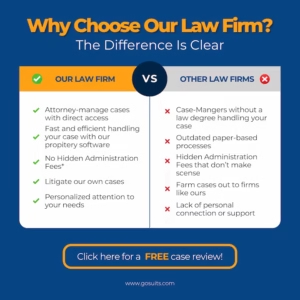A head-on collision near Driscoll, Texas, has prompted a response from the Texas Department of Public Safety (D.P.S.) and the shutdown of a portion of southbound U.S. 77. The incident occurred when a vehicle traveling northbound veered into the southbound lanes, resulting in a collision with an 18-wheeler. The D.P.S. is currently investigating the circumstances surrounding the accident.
Incident Details
According to Staff Sgt. Rob Harold Mallory with D.P.S., the collision occurred when a man driving a Mazda Tribute northbound on U.S. 77 crossed over into the southbound lanes and collided head-on with an 18-wheeler. The driver of the Mazda Tribute sustained injuries and was transported to Spohn Shoreline for medical treatment. Fortunately, the driver of the 18-wheeler was not injured in the collision.
Following the accident, D.P.S. troopers shut down a portion of southbound U.S. 77 near Driscoll to conduct a thorough investigation and clear the scene. Traffic is currently being diverted off U.S. 77 southbound at County Road 28, while the northbound lanes remain open. Drivers are advised to exercise caution when traveling through the area.
Head-On Collisions: A Serious Safety Concern
Head-on collisions are among the most dangerous types of car accidents due to the high impact forces involved. When two vehicles collide head-on, the combined speed and weight can result in severe injuries or fatalities. These types of collisions often lead to significant vehicle damage and can have lasting physical, emotional, and financial consequences for those involved.
Factors Contributing to Head-On Collisions
Several factors can contribute to head-on collisions, making it essential to understand the common causes to promote safer driving habits. Some of the most prevalent factors include:
- Distracted Driving: One of the leading causes of accidents, distracted driving involves any activity that diverts a driver’s attention from the road. This can include texting, talking on the phone, eating, adjusting the radio, or using navigation systems.
- Driving Under the Influence: Alcohol and drug impairment significantly affect a driver’s judgment, coordination, and reaction time, increasing the likelihood of a head-on collision.
- Drowsy Driving: Fatigue can impair a driver’s ability to focus and react, similar to the effects of alcohol. Drivers who are tired are more likely to make errors that lead to accidents.
- Speeding: Exceeding the posted speed limit or driving too fast for conditions reduces the amount of time a driver has to react to unexpected situations, increasing the risk of a collision.
- Wrong-Way Driving: Drivers may mistakenly enter a highway or one-way street in the wrong direction, leading to head-on collisions with oncoming traffic. This can occur due to confusion, impaired judgment, or inadequate signage.
- Lane Departures: When a driver drifts out of their lane, whether due to distraction, fatigue, or impairment, they risk colliding with vehicles in adjacent lanes, including oncoming traffic.
- Poor Weather Conditions: Rain, fog, snow, and ice can reduce visibility and make roads slippery, increasing the likelihood of accidents.
- Mechanical Failures: Vehicle malfunctions, such as brake failure or tire blowouts, can cause a driver to lose control and veer into oncoming traffic.

Legal Aspects of Head-On Collisions
From a legal standpoint, head-on collisions often involve complex investigations to determine the cause of the accident and establish liability. Key considerations in these cases include:
- Determining Fault: Identifying the at-fault driver is crucial for pursuing a personal injury claim. This typically involves gathering evidence such as police reports, witness statements, and accident reconstruction analysis.
- Negligence: Proving negligence is essential in a personal injury case. Negligence occurs when a driver fails to exercise reasonable care while operating a vehicle, resulting in harm to another person. Examples of negligence include distracted driving, driving under the influence, speeding, and violating traffic laws.
- Damages: Victims of head-on collisions may be entitled to compensation for a range of damages, including medical expenses, lost wages, vehicle damage, and pain and suffering.
- Insurance Claims: Navigating the insurance claims process can be challenging, particularly in cases involving serious injuries. It is important to understand your rights and the coverage available under your insurance policy and the at-fault driver’s policy.
Safety Recommendations to Reduce Head-On Collisions
Preventing head-on collisions requires a commitment to safe driving practices and awareness of potential hazards. The following recommendations can help reduce the risk of these serious accidents:
- Avoid Distractions: Put away cell phones and other electronic devices, and focus solely on driving.
- Never Drive Impaired: Do not operate a vehicle under the influence of alcohol or drugs.
- Get Adequate Rest: Ensure you are well-rested before driving, and take breaks during long trips to avoid fatigue.
- Obey Speed Limits: Drive at a safe speed for the conditions, and adhere to posted speed limits.
- Stay Alert and Focused: Pay attention to your surroundings and be prepared to react to unexpected situations.
- Maintain Your Vehicle: Regularly inspect and maintain your vehicle to ensure it is in safe operating condition.
- Adjust to Weather Conditions: Slow down and increase your following distance in adverse weather conditions.

Commentary from Gosuits Driscoll, Texas Personal Injury Attorney
The recent head-on collision near Driscoll serves as a stark reminder of the potential for serious accidents on our roadways. Head-on collisions often result in severe injuries and significant legal complexities. A thorough understanding of the factors that contribute to these accidents, along with a proper investigation, is crucial in determining liability and protecting the rights of those who have been injured. Individuals involved in such accidents should seek appropriate legal guidance to understand their options and navigate the claims process effectively.






